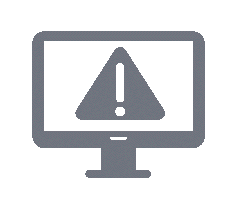Targeting Inappropriate Imaging Orders
In an era of value-based care, appropriate use criteria (AUC) is top of mind for imaging leaders. In a recent Advisory Board Imaging Performance Partnership poll, identifying opportunities to better manage imaging utilization ranked as radiology directors #1 priority. Imaging departments continue to struggle with the challenge of finding ways to get clinicians to order the right test for the right patient and gain traction around appropriate use.
Why the Struggle?
Identifying common causes of inappropriate imaging orders will help imaging programs target opportunities where they can implement change.
Here are 6 root causes that negatively affect imaging utilization:
• Defensive Medicine
• Provider Lacks Imaging Knowledge
• Provider Order Error and Duplicate Exams
• Standing Orders
• Provider Lacks Knowledge of Patient
• Self-Referrals
How to Overcome These Challenges?
With the increased utilization of acute healthcare services and Medicare Advantage contracts, the cost of inappropriate imaging utilization is becoming problematic not only for payers and employers, but also for hospitals and health systems. Advisory Board provides three strategies for imaging leaders and radiologists to manage utilization and reduce order error.

Build Accountability for Systematic Order Checks
The first opportunity to reduce inappropriate imaging is to strengthen order review. This enables imaging programs to detect and correct ordering errors before they lead to inappropriate services.
Two keys to successful order review:
- Dedicate time and responsibility for staff to complete order checks
- Implement a process to change orders, modify schedules and track changes to ensure corrections are made

Proactively Revise Routine Orders
A well-organized order review process is great at catching errors prior to exams, but it is even better to prevent inappropriate imaging orders before they happen. One way to do this is to focus on routine or standing orders. Although standing orders improve workflow and efficiency, with ever-changing healthcare guidelines, they can become outdated and a cause of inappropriate orders.
Proactively reviewing and revising routine orders allows imaging programs to:
- Remain updated on imaging technology uses
- Stay current on guidelines of when and how much to image
- Meet changes in physician needs

Leverage IT to Eliminate Duplicate Exams
Duplicate exams are a huge contributor to inappropriate imaging. According to the Journal of the American Medical Association, the U.S. spends $20 billion annually on duplicate imaging exams. Hospitals and health systems need to look to technology as a way of eliminating redundant orders. Implementing an alert system is an effective way to combat duplicate imaging.
The following criteria will aid in developing a successful alert system:
- Include physicians in the development process
- Pick suitable targets and limit alert usage to conditions with high volumes of inappropriate use
- Decide how often alerts should fire and whether they should be passive or active
- Consider developing alerts that only fire in certain settings for certain patients
- Educate and gather feedback before and after the rollout
- Provide ongoing education to ensure alerts are followed
Success in advancing appropriate imaging use requires hospitals and health systems to look at their current range of care and analyze data to identify areas of inappropriate use. Understanding appropriate use targets and implementing systematic order checks and revisions will help you overcome challenges to better manage imaging utilization.
